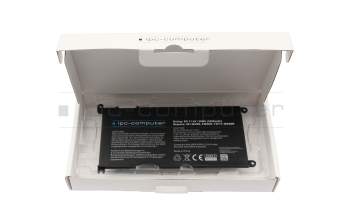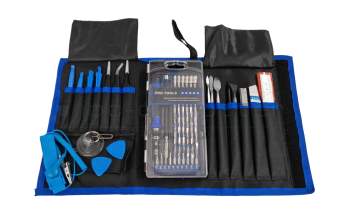IPC-Computer battery compatible to Dell FW8KR with 39Wh
45.00 €
incl. Tax (19%)
plus shipping charges
plus shipping charges
In stock.
Express shipping possible.CO2-compensated
Installation in our repair shop
Substitute part numbers:
08YPRW
Product Info
- Manufacturer
- IPC-Computer
- Item Number
- FW8KR
- Sub-Partnumbers
- 08YPRW,
- Safety information
- Sicherheits- & Herstellerkontakt-Informationen
Common data
- Condition
- New
- Manufacturer
- Replacement product from IPC-Computer
- Color
- black
Technical Data
- Battery type
- intern
- Battery technology
- Li-Polymer
- Capacity
- 3400 mAh / 39 Wh
- Output (volt)
- 11.1 Volt
- Number of cells
- 3 Cells
Battery Quality
Category
- Category
- Batteries
- Usage
- Laptop
- Excerpt of suitable models for P/N FW8KR
- Dell Vostro 15 (5581) , Dell Inspiron 15 (7569) , Dell Latitude 15 (3590) , Dell Latitude 11 2in1 (3190) , Dell Inspiron 15 (7560) , Dell Inspiron 14 (7460) , Dell Latitude 13 (3390) , Dell Inspiron 15 (5579) , Dell Inspiron 15 (5575) , Dell Inspiron 15 (7570)
You've found this article over a part number. We'll check if it's the correct sparepart for your machine. To do this, please insert the manufacturer and the name of the model in the order comment.
Videos & Contributions












